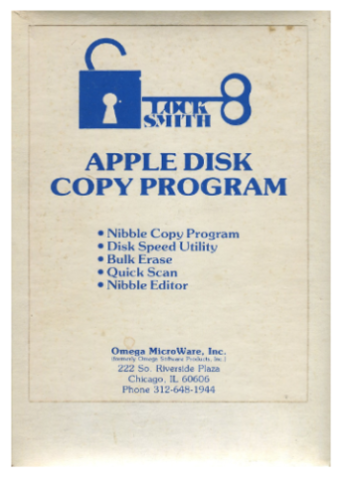Introspective Networks’ flagship product, SmokeNet, which provides next generation network security for things like Zero Trust Architecture and Quantum safe encryption, has been approved by the Department of Commerce for commercial sale in the US and globally. Approval was granted following a security review from the National Security Agency (NSA). SmokeNet is the first network technology that has been validated to have zero network vulnerabilities, following a rigorous test from a military approved Red Team assessment. SmokeNet has Phase III status allowing the US Government to purchase it without competition. It also holds 8 granted patents.

Figure 1: SmokeNet SNGW2 ata customer site.
Using a technique called Moving Target Defense, SmokeNet eliminates a critical attack vector for network attacks. Two things are required to attack a network stream: the originating port (like port 80 for web sites) and an IP address on either end of the connection. By rotating and disguising ports, SmokeNet removes the critical information required to successfully attack any network. This is how SmokeNet became the first technology to return zero network vulnerabilities from an official Red Team Assessment requested by the USAF CyberWorx group.

Figure 2: SmokeNet SNAP5 for use at home or small business
With the data hidden, SmokeNet is able to transmit large amounts of key material in secret. This allows SmokeNet to utilize the only known uncrackable encryption method – the One Time Pad (OTP) – aka a Vernam Cipher, solving a decades old computer science problem called “The Key Exchange Problem”. Solving this problem, along with current technological realities like a glut of network bandwidth and computing resources, is what makes streaming OTP encryption possible.
SmokeNet’s underlying technology, Streaming Transmission One Time Pad Protocol (STOP), is the invention of Anthony Scott Thompson. Anthony is an inventor and innovator, like his father, Dr. Larry F. Thompson, a Bell Labs Fellow who headed Bell’s polymer engineering department for two decades developing the seminal, working polymer resist material and processes for manufacturing modern computer chips. Dr. Thompson had a storied career, and his position at Bell Labs provided his young son with access to early stage technologies including home computers and networking. As a teenager, Anthony beta tested the first line of Apple computers and had access to ARPANET, the precursor to the Internet. This also included exposure to cryptology and an understanding that math was a poor method of encryption.

Figure 3: Left to right: Hugene Fiet, Dr. Murray Bowden and Dr. Larry F. Thompson. This is the first working polymer resist material. Picture taken at Bell Labs, Murray Hill.
Dr. Thompson, who served as a member of the DoD science advisory board at the time, would remind his curious, impetuous son trying to create an uncrackable algorithm, “Tony, you cannot use math for encryption.” Anthony’s interest in cryptology stemmed from cracking encryption to make backup copies of computer games. He discovered ciphers of that era were easily cracked– largely due to the fact that math algorithms were the basis of the encryption. Unfortunately, current encryption standards are still based on similar algorithms. Experts universally agree that, over the next decade, these methods will not be effective in preventing hackers from accessing any information they want. The One Time Pad cipher, on the other hand, creates an unsolvable problem: X + Y = Z – a pre-algebra trick question. Even if the encrypted data Z is provided, there is no way to solve for X or Y with any certainty. It is not an algorithm but a basic math equation.

Figure 4: Lock Smith for early Apple computers.
The founder and CEO of Introspective Networks, Anthony Thompson holds a postgraduate degree in Computer Science and had a long, successful career with Level 3 Communications (now Lumen). He left in 2013 to form his own company. In February of that year, the contents of the Snowden NSA leaks appeared on Wikileaks. Doing a quick survey of the documents, Mr. Thompson discovered that government methods for cyberattack were also disclosed. These leaks have led to the Cybersecurity and ransomware problem currently experienced. Given the magnitude of this problem, the leaks became a call to action for Mr. Thompson. After contemplating on how to use a One Time Pad in the network, he filed a provisional patent for a Streaming One Time Pad (STOP) cipher.

Figure 5: IN T-CEO Anthony Scott Thompson
SmokeNet, the product approved for sale by the Department of Commerce, is a VPN-like implementation of STOP. With this Department of Commerce approval for sale as a commodity including an NSA blessing, Introspective Network is offering the same technology offered through government Phase III contracts to the public for personal use, as well as the public and private sectors. Mr. Thompson says, “Everyone needs to have this kind of cyber protection immediately. We have made the product affordable for home and SMB use as well as large corporations and public sector use. Agreements with HPE and others allow IN enormous production capacity. We can build the infrastructure required to secure our country expeditiously.”
Learn more about STOP and SmokeNet at https://inets.us/learn
Click to see NewsWatch’s review of SmokeNet for home use.
Media Contact
Company Name: SmokeNet
Contact Person: Anthony Thompson
Email: Send Email
Address:11001 W 120th Ave, #400
City: Broomeld
State: CO 80021
Country: United States
Website: https://inets.us/

